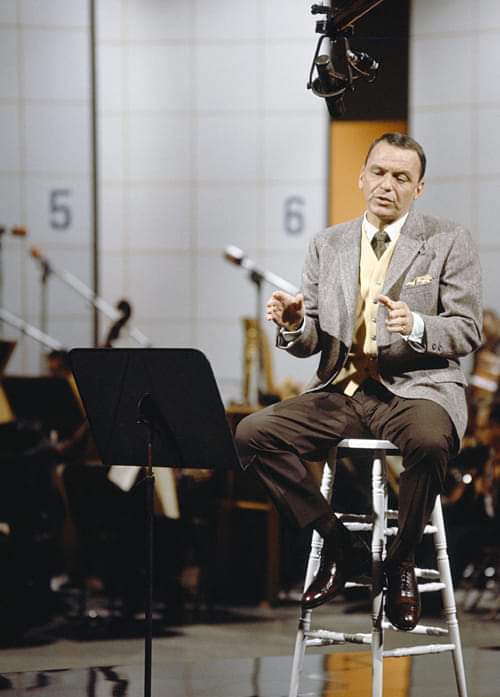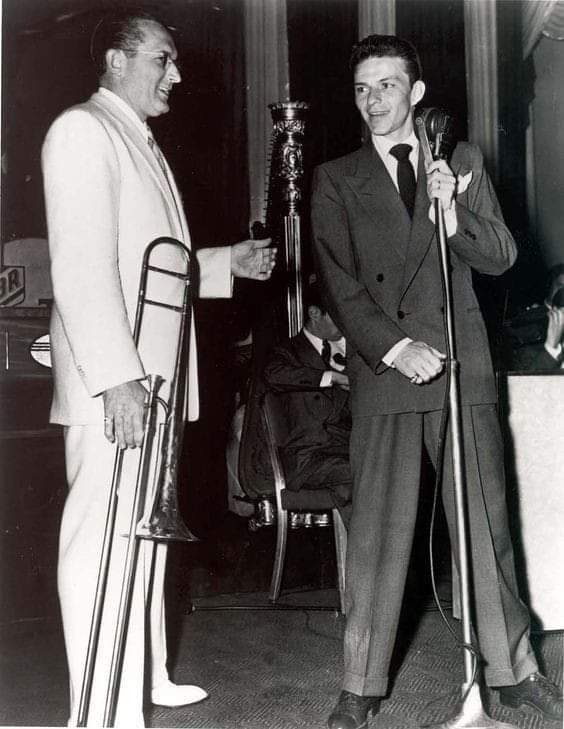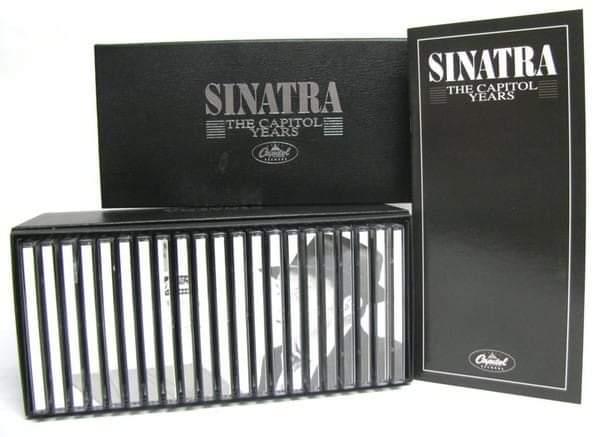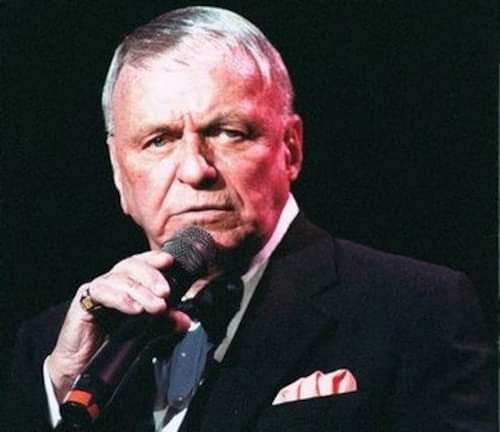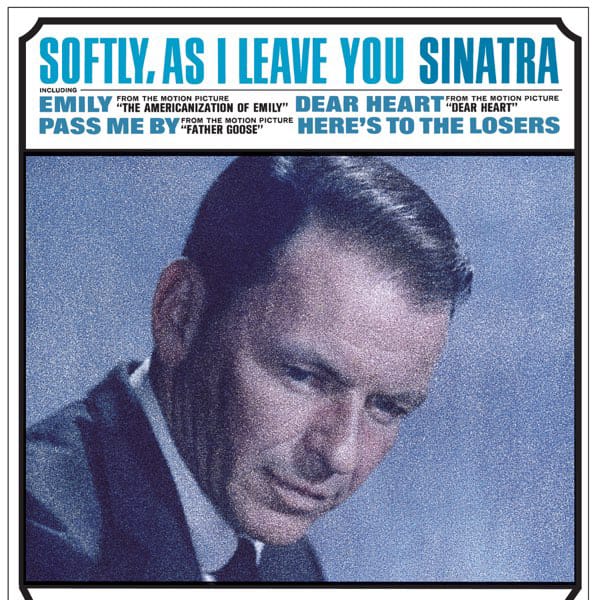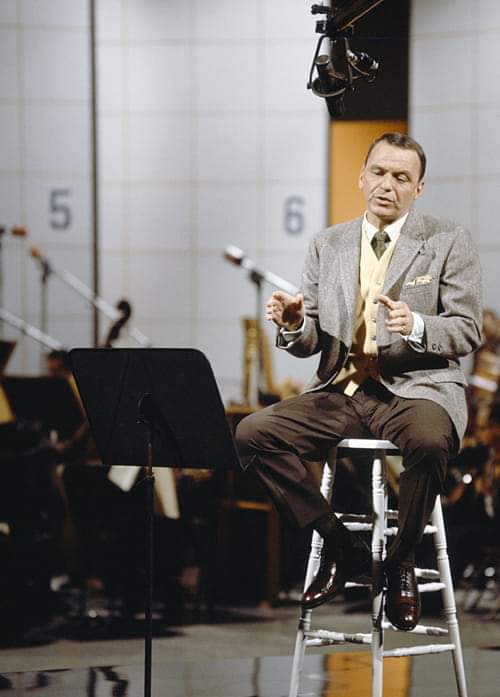
Analysis of “A Man And His Music”, the television special.
By Mahnuel Muñoz
1965 is the year in which Frank Sinatra turns 50, half of which he has dedicated to the world of entertainment, leaving an indelible mark on society and culture.
The artist receives the anniversary with a productivity that is hardly conceivable today: a concert tour that takes him from Las Vegas to New York, passing through the prestigious Newport Jazz Festival, three feature films, four LPs, (among them the extraordinary “September Of My Years“) and a dozen television programs, as a guest or protagonist; Among these, the special that aired on November 24 on the NBC network, with the title “A Man And His Music“, will go down in history.
The title leaves no room for doubt: it is a journey through the singer’s career, throughout which we enjoy some of his greatest commercial and artistic successes. To do this, he will be accompanied by Nelson Riddle and Gordon Jenkins conducting the orchestra and, in charge of production, Dwight Hemion, a young and brilliant name in the television industry, who came from working with Steve Allen, Bing Crosby and Barbra Streisand, and Throughout his career he would obtain fifty Grammy nominations and 18 victories, as well as join his talents with those of Paul McCartney, Bette Midler, Shirley MacLaine, Julie Andrews, Elvis Presley, Burt Bacharach and Luciano Pavarotti.
Frank does not like doing television, which has motivated him, apart from his role as a guest in some other space, to have let five years pass since the end of the “Frank Sinatra Timex Show.” Five is a long time in show business, and in the 1960s that period seemed even longer, marked by unprecedented social and cultural changes.
The small screen is also experiencing a revolution; 1965 records record sales of television sets in the United States, after television networks announce that more than half of their prime-time programming will be in color starting in the fall.
For the program, Sinatra needs no more arguments than his classical repertoire, unquestionable mastery and the irresistible charisma that has made him a living legend. He faces the project with enthusiasm; He sees in it an opportunity to please his loyal followers and to present himself to the new generations. The result is an elegant and timeless work, which seen today, fifty-five years later, has not lost an iota of taste, freshness and originality.
However, on the eve of the show the air vibrates negatively around the singer. The tabloid press, obsessed with him forever, has been harassing him because of his relationship with Mia Farrow, the beautiful and promising 20-year-old actress. He is also irritated by rumors about the content of his private life, including his possible friendship with mobsters, in Walter Cronkite’s biographical documentary on CBS, which will air a week before “A Man And His Music.” “. The musical program itself is a cause of tension for the artist, and no wonder, since he must sing 17 songs, and a few days before production a cold has diminished his voice. In fact, Frank’s vocal problems are noticeable in the recording during the first part of the space; He struggles to breathe, clears his throat and coughs, appears tense, recites the script unnaturally and nervously handles his hands when he does not have a microphone.
The recording process begins marked by moments of tension between the singer and the technical team. After seeing and hearing the take of “Nancy“, Frank, frustrated by the state of his instrument, orders work suspended until he feels better, which will happen after a few days of rest in Palm Springs.
Upon his return, in addition to being recovered, Sinatra is relieved that Walter Cronkite’s documentary on CBS, far from being a defamatory pamphlet, is a fundamentally flattering portrait that lays out a bright red carpet for the musical.
With the two main sources of concern eliminated, the work sessions resume with energy and joy on the part of everyone involved, and when the director exclaims the final “Cut!”, there is a well-watered whiskey party in Sinatra’s dressing room. .
The special was a resounding success with critics and audiences. It won a Grammy, a Peabody Award and a Golden Globe nomination and became the beginning of a saga of annual shows until 1969.
Repertoire
Before analyzing the list of songs I must mention the fantastic introduction in the purest style of police cinema, with Sinatra at the wheel of his car traveling through the empty streets covered by the mantle of night until reaching the set where the produce the magic.
“I’VE GOT YOU UNDER MY SKIN“: The best possible beginning for a program with a historical vocation is the old Cole Porter song that Frank and Nelson Riddle turned into a classic and their joint calling card in 1956. Sinatra performs forcefully and seductively , and the only objection I can make is that the legendary instrumental bridge has been cut with little subtlety in the edition, I suppose for reasons of time.
“WITHOUT A SONG“: Sinatra sang this song with Tommy Dorsey‘s orchestra in 1941 and re-recorded it twenty years later with the arrangements heard here, the work of Sy Oliver, for his tribute album “I Remenber Tommy“.
Despite the cold that leaves a certain harsh sound in his voice, he gives an energetic performance and hits interesting long notes.
“DON’T WORRY ‘BOUT ME“: A beautiful song from 1953 that was relegated to a single and the compilation “This Is Sinatra!”. Here Frank has little problems with his throat, even clearing his throat a couple of times, and although the performance is correct, it doesn’t excite me, and I miss Nelson Riddle’s wonderful orchestral bridge.
“I GET A KICK OUT OF YOU“: another Cole Porter standard that Sinatra offers us by introducing us to an “old friend“, the lamppost with whom he shared the spotlight on the cover of “Songs for young lovers“, his first LP with Capitol , published in 1954. He sings accompanied by a special arrangement by Nelson Riddle, based on the original, but more lush and powerful. The interpretation is lively and luminous.
“NANCY“: after a brief monologue in which he laughs at himself for his judgment when it comes to recognizing some good songs, Frank offers us one of the most emotional moments of the program, with a sweet and profound interpretation of this song that dedicated in 1944 to his first-born daughter. The studio lights turn off to let us see and feel only the singer, who seems to forget his physical and personal problems to pour his purest love into this beautiful piece.
“MY KIND OF TOWN“: the composition by Sammy Cahn and James Van Heuse for the film “Robin and the 7 hoods” serves the singer to express the love he feels for performing live for an audience. A clean and fresh performance, typical of the best Sinatra of the time, and a fabulous closing of the first part of the show.
MEDLEY IT WAS A VERY GOOD YEAR/YOUNG AT HEART/THE GIRL NEXT DOOR/LAST NIGHT WHEN WE WERE YOUNG/THIS IS ALL I ASK: We reach the halfway point of the program, also the most artistic and poetic part. The baton changes to the hands of Gordon Jenkins, which means diving into an ocean of nostalgic beauty. Using “It was a very good year”, the most famous piece from the album “September of my years”, as a common thread, Sinatra and Jenkins take us hand in hand to travel through the ages of love, with a magnificent audiovisual narration. Each song is filmed in different settings that evoke the seasons of the year: “Young at heart” -falling in love-, on a tree-lined path, illuminated with spring pink reflections; “The girl next door” – the passion -, on a bridge that crosses a small river, with the bluish light that suggests a clear summer night; “Last night when we were young” – the breakup – takes the protagonist and his broken heart to the big city and its icy gray light; and finally “This Is All I Ask” – stability – proposes a placid winter with warm and hopeful flashes of light. Sinatra offers an outstanding reading throughout this medley, perhaps drawing on his extensive and complex sentimental experience to give each song the appropriate caress.
Some old footage of flight pioneers serves as an introduction to the highlight of the special, a mini concert in which Frank, dressed in an immaculate tuxedo, stands in front of the orchestra, again conducted by Nelson Riddle, to dedicate 15 minutes of pure, jazzy music. happiness “Come fly with me“, “The lady is a Tramp“, “I’ve got the world on a string“, “Witchcraft” and “You make me feel so young” follow one another in a merciless swing bombardment capable of turning in Synátrico to the most profane. Frank is comfortable, electric, funny like no other time on the show. He flies again above the highest of peaks, younger than spring and ready to assert his artistic and vital philosophy in a new world.
“ANGEL EYES/PUT YOUR DREAMS AWAY“: some verses from “Angel eyes“, with which Frank invites us to toast the moment lived, serve to introduce the farewell theme: “Put your dreams away” was the song with which that Sinatra closed his radio programs in the 1940s. In it he invites us to save our dreams to make a place in our hearts for him, for The Voice of our best musical and vital moments. His followers no doubt renewed their vows with him, and I like to think that many new ones were born. A beautiful final touch to one of the most relevant moments of The Voice’s career.
If you want to visit more articles about the life of Frank Sinatra enter the following Sinatra Radio 24h link: https://sinatraradio24h.com/category/articles/
We remind you that you can also listen to Sinatra Radio 24 hours on your mobile phone by downloading our free applications for Android in the Play Store https://play.google.com/store/apps/details?id=sinatra.radio24h

